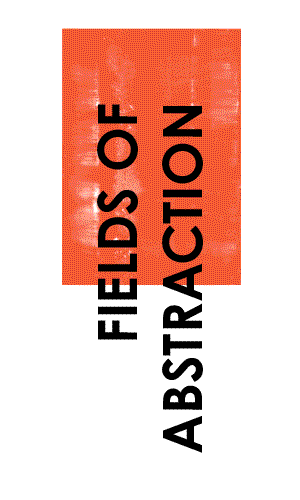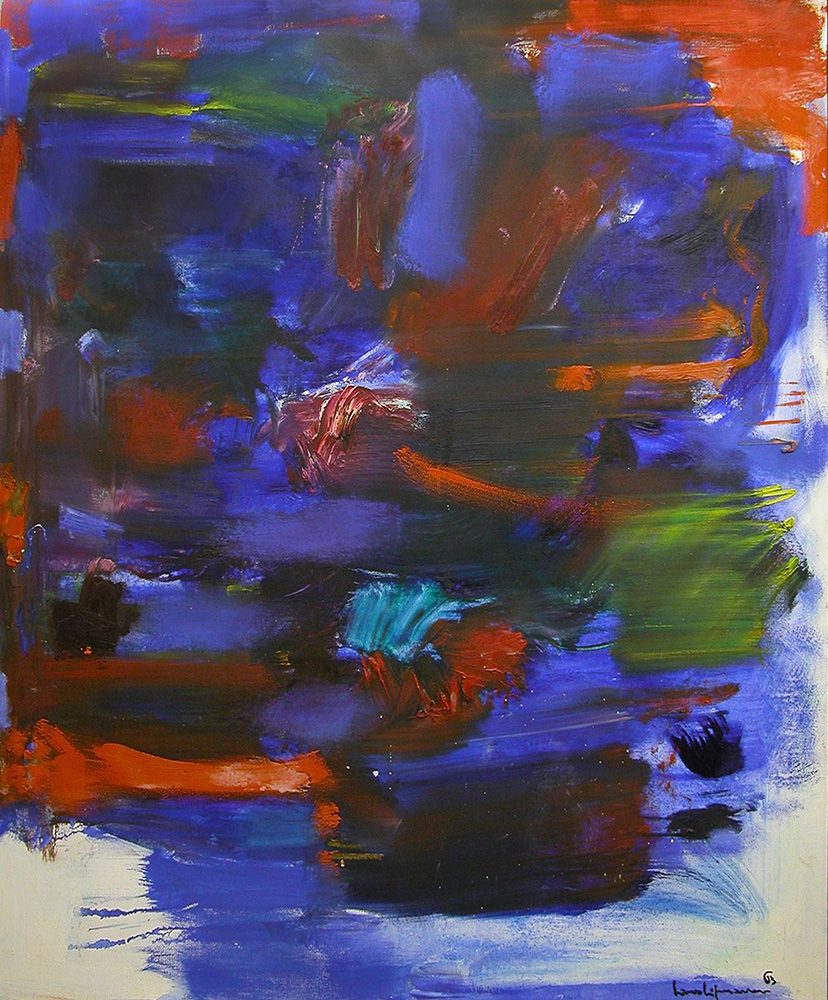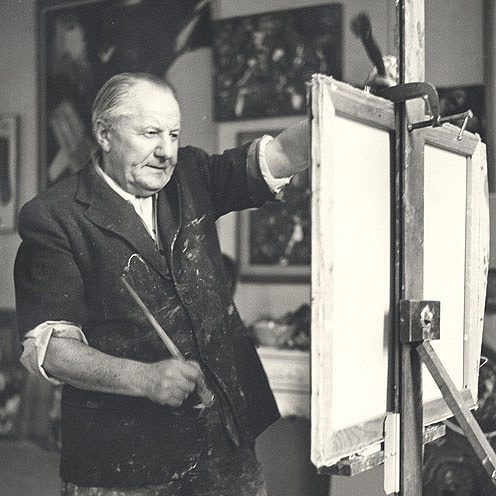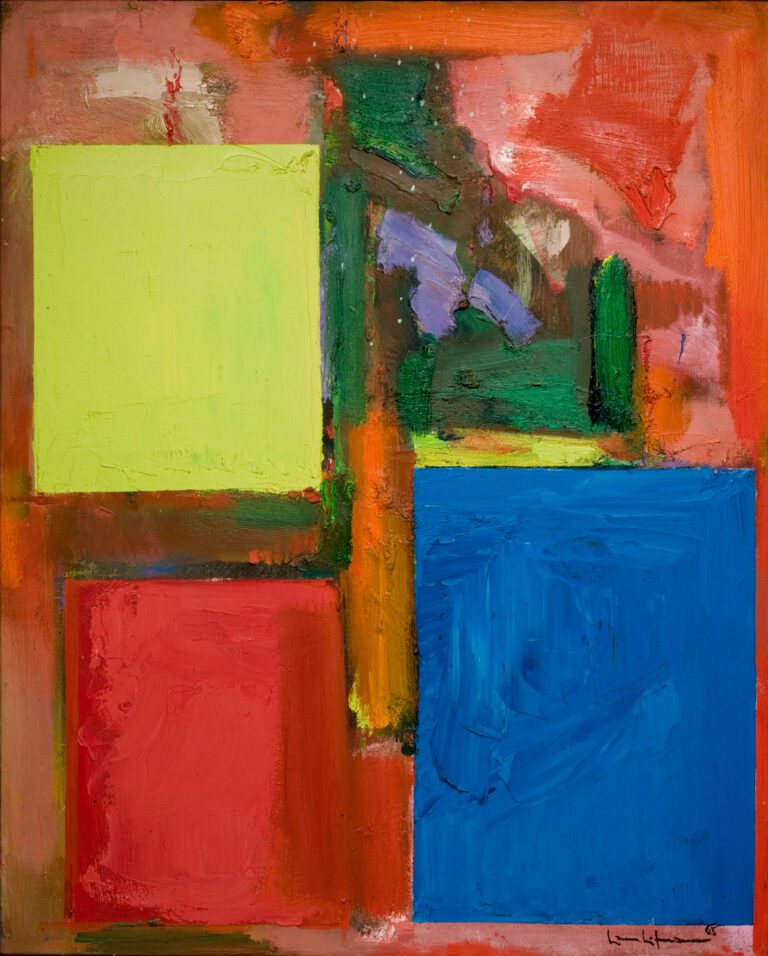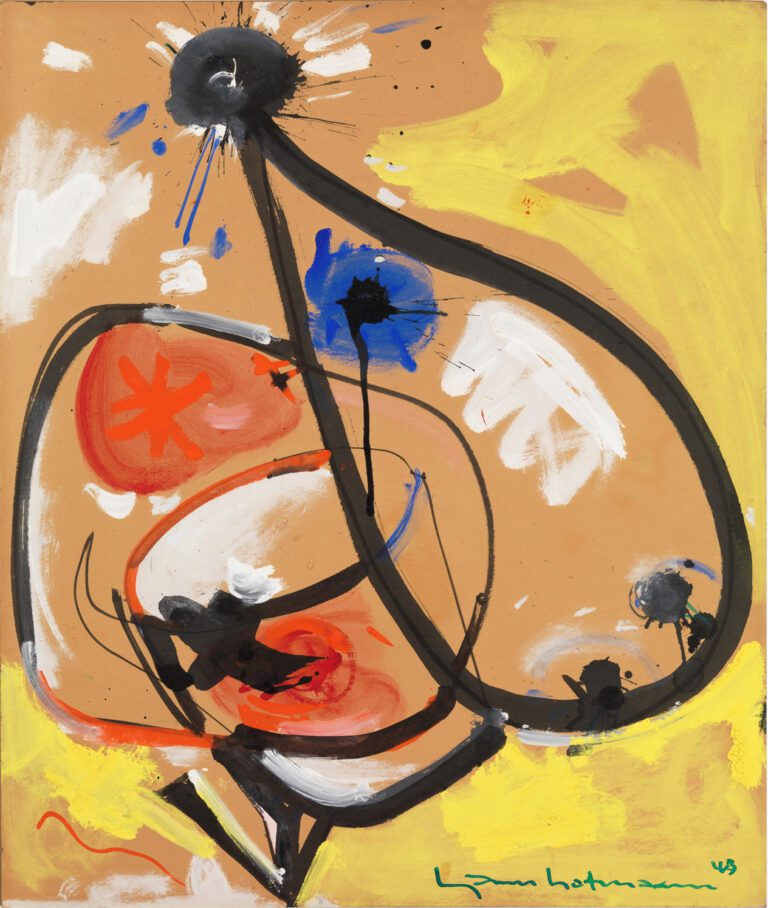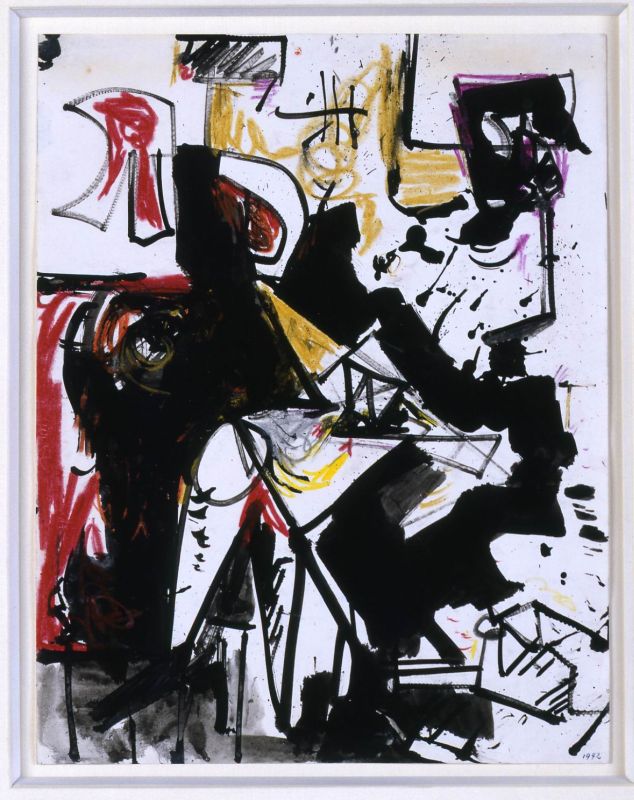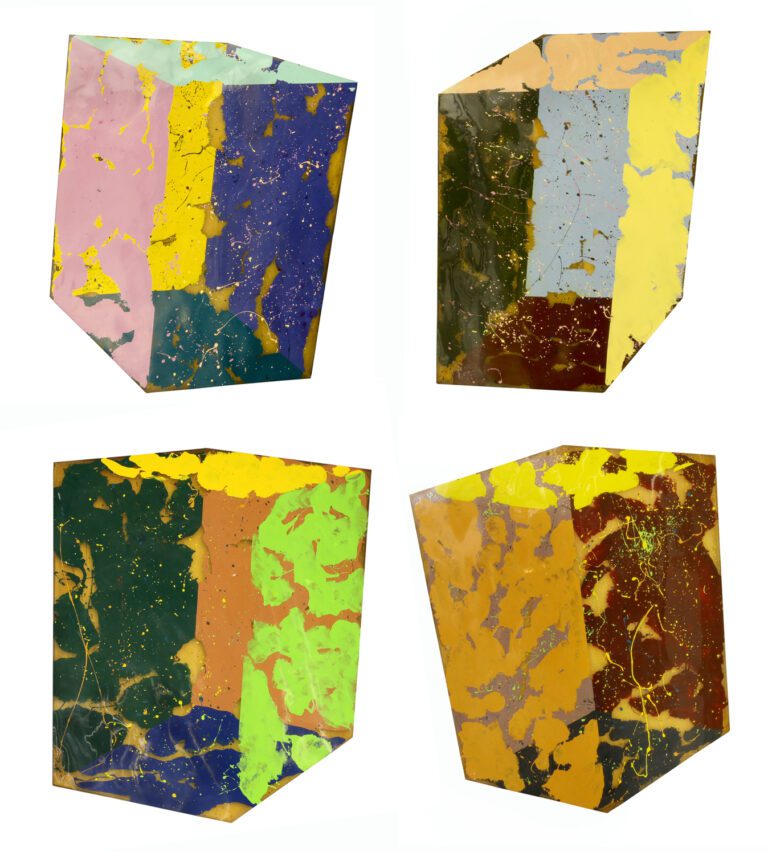An influential member of the Abstract Expressionist movement, Hans Hofmann was also a renowned lecturer in art theory at the schools he founded in New York and Cape Cod, Massachusetts. In the early 1950s he became interested in tactile surfaces and formulated a method to create texture and movement by applying paint in small, rhythmic brushstrokes. This technique resulted in a mosaic of colorful shapes, which developed over time into the typical rectangular structures that characterized Hofmann’s work throughout the last decade of his life.
In Blue Rhapsody II, Hofmann temporarily abandoned his signature geometric style, leaving only the “background” of his paintings, the color-laden brushstrokes of undefined shapes and bright colors. Hofmann believed in the interdependence of shape and color and in the fact that these alone could produce depth and perspective. Indeed, the bright reddish-orange stains appears to jump out of the surface of the canvas, while the deep blue and the murky red sink into its depths. The vivid colors and agile brushstrokes create a sense of spontaneity, of abstract images originating in the artist’s subconscious.
Like George Gershwin in his 1924 Rhapsody in Blue – a work for “piano and jazz band” incorporating elements of European symphonic music and American jazz – Hofmann contrasts syncopated abstraction with expressive romanticism. According to art theorist Clement Greenberg, Hofmann was the artist who heralded the transition from geometric abstraction to expressive abstract painting. With his deep knowledge of color, principles of perspective, and expressive brushwork, Hofmann drew a connecting line between European painting – Cézanne, Kandinsky, Cubism – and the new American painting of his time, which aimed to distill the spontaneous, liberating, and intuitive emotion of painting.
Yam Treiber and Adina Kamien
